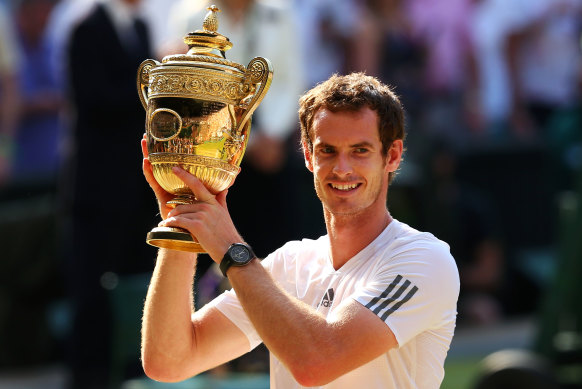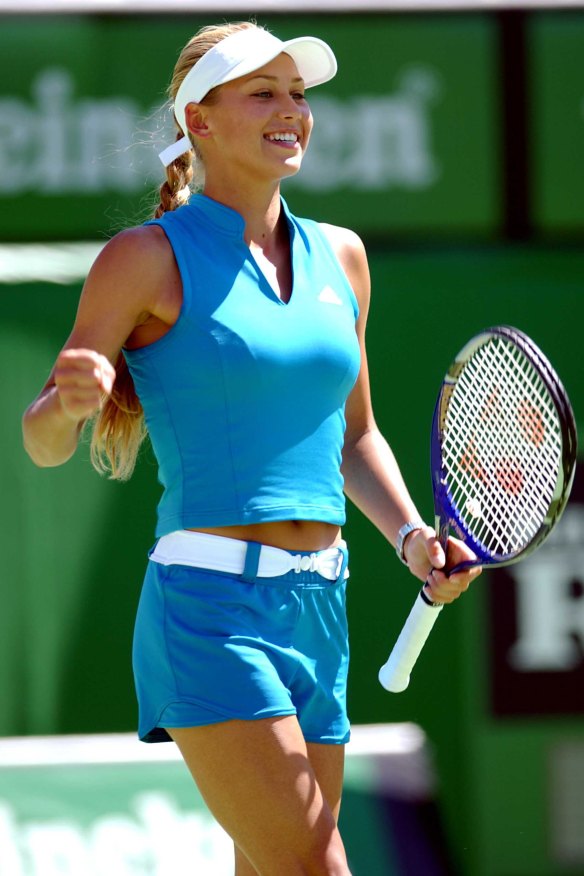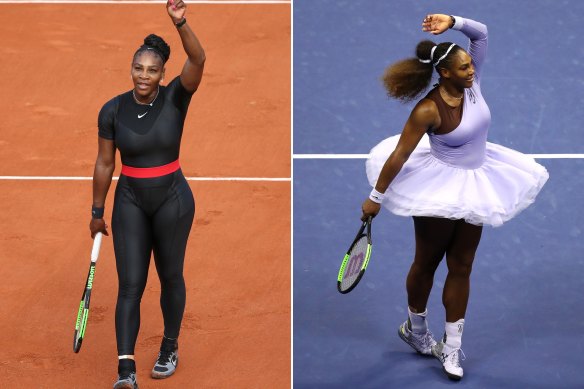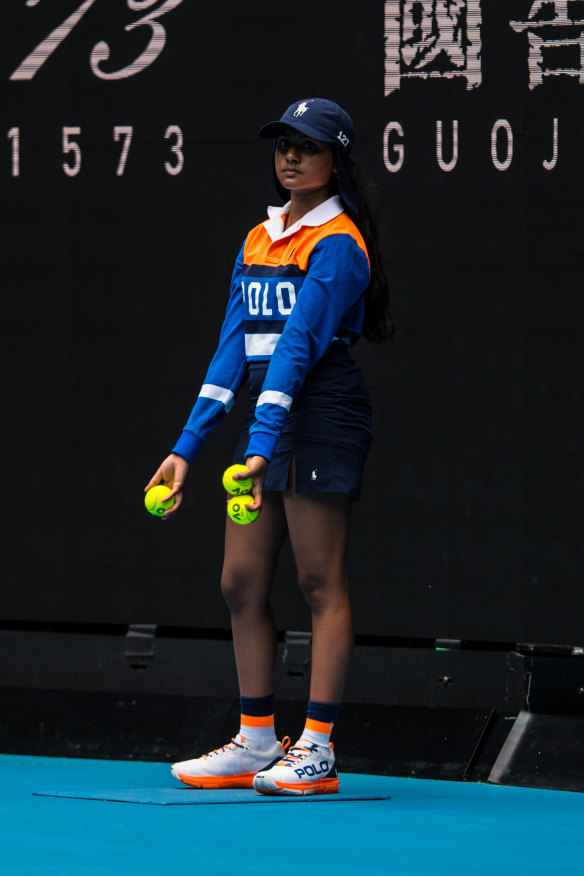This was published 1 year ago
Tennis and fashion’s love game – on and off the court
From Agassi’s fluoro threads to Federer’s Rolex watches to Serena Williams’ – well – everything, fashion and tennis have long been happy bedfellows.

Andy Murray with his Rado watch, celebrating victory at the 2012 US Open. Credit: Getty Images
Moments after his win at the 2012 US Open over Novak Djokovic, Briton Andy Murray began shouting to his players’ box. But it wasn’t out of joy or gratitude or even relief after winning the gruelling five-setter. It was because he couldn’t find his Rado watch for the trophy ceremony, the all-important money shot.
Money, the kind that comes from sponsorships such as Murray’s reported £1 million-a-year Rado deal, goes hand in hand with tennis, a sport in which personal triumph mostly outranks team success (exceptions include the Davis Cup and the Olympics). And with that emphasis on individuality comes a natural affinity for fashion, given so few players have to wear a uniform to compete as they do in football, or even motor sport.
Sydney designer Bianca Spender, whose own collections have been inspired by tennis apparel, believes fashion occupies an important place in the sport. “They’re big personalities, and they express that through their clothes,” she says. “And in professional sport there isn’t a lot of that. So we think we have a much greater understanding of who they are.”
“They’re big personalities, and they express that through their clothes. And in professional sport there isn’t a lot of that.”

Roger Federer wearing Uniqlo and a Rolex.Credit: Getty Images
Whereas luxury watches, athletic apparel and footwear have been part of tennis for most of the past century, high fashion is increasingly finding its way into the sport. Take 20-year-old Briton Emma Raducanu, number 76 in the women’s rankings near the end of 2022, wearing Dior to accept her Order of the British Empire from King Charles in November. Or Roger Federer, who, before his retirement last September, raised the bar for on-court men’s fashion with his blazers, Rolex watches and, more recently, a 10-year deal with Japanese retailer Uniqlo. And of course there’s Serena Williams in, well, everything she wore throughout her career.
For tennis theatre, fashion commentator Kellie Hush can’t go past Russia’s Anna Kournikova, who retired from the sport in 2003. Although Williams will arguably go down as a greater influence on high fashion, thanks in part to her collaboration with the late US designer Virgil Abloh, Hush says Kournikova was one of the first female players to “step away from the conservatism of the game [with] colour, major jewellery and that long plait”.
While Williams constantly pushed the envelope – remember her Nike catsuit in 2018? Or the one-shoulder, Abloh-designed tutu the same year? – Kournikova’s outfits, especially the belted shorts sets she favoured, have a retro charm that is still influencing fashion today. And let’s not forget the male players with their own sartorial flair, from American Bill Tilden’s white cable-knit jumpers and trousers in the 1920s to Nick Kyrgios’ oversized T-shirts and Andre Agassi’s fluorescent outfits and three-year boycott of Wimbledon over its strict all-white dress code.

Anna Kournikova in a belted shorts set in 2002.Credit: Getty Images
Even moments of so-called “anti-fashion” have enriched the game, such as when Australian player Casey Dellacqua famously bought her playing tops from Target when she didn’t have a clothing sponsor (she was later supported by Lululemon).
“Tennis is a vehicle for change, especially for women. It’s not restrictive; tennis wear is performance wear that also looks incredible.”
Menswear designer Christian Kimber says tennis has always been synonymous with style, especially given it’s one of the few sports men and women play together. “So naturally, there’s always been an interest in looking good on the court,” he says. “Now, I think, tennis is a vehicle for change, especially for women. It’s not restrictive; tennis wear is performance wear that also looks incredible.”
Kimber says Wimbledon, in particular, has long been a source of inspiration for him: “Striped linen shirts, retro knits, polo shirts … I definitely look to on- and off-court icons like John McEnroe in the 1970s when designing today. That approach to style was the precursor to activewear, and you can see its influences everywhere.”

Serena Williams, left, in a Nike catsuit in 2018, and right, that same year, in a tutu designed by the late US designer Virgil Abloh.Credit: Getty Images
This summer, with the Australian Open looking to up its lifestyle and luxury cred, several fashion brands, from local Aje Athletica to Prada offshoot Miu Miu, have taken their cues from centre court. Ralph Lauren, the granddaddy of the American sportswear movement, is once again the official clothier of the tournament officials. And it doesn’t hurt that tennis is the preferred sport of one of the most powerful women in fashion, US Vogue editor-in-chief Anna Wintour, who attended the Australian Open in 2019.

A ballgirl at the 2022 Australian Open in Ralph Lauren.Credit: Getty Images
Vera Yan, co-founder of Sydney-based Nimble Active-wear, says tennis offers designers an opportunity to pay homage to tradition while incorporating the latest fabric technology and what she calls “lifestyle opportunities”; that is, people who don’t necessarily play tennis but dig the vibe. Libby Page, market director at retailer Net-a-Porter, says the latest iteration of the tennis trend began with the label Sporty & Rich, which makes vintage-inspired sweatshirts, pleated skirts and even tennis-inspired socks. Think Lacoste for the Instagram set.
From box pleats to the buckles and tabs that were a feature of sportswear in the pre-stretch-fabric 1920s and ’30s, tennis’s influence over fashion is set to continue long into the future. Game on.
To read more from Good Weekend magazine, visit our page at The Sydney Morning Herald, The Age and Brisbane Times.